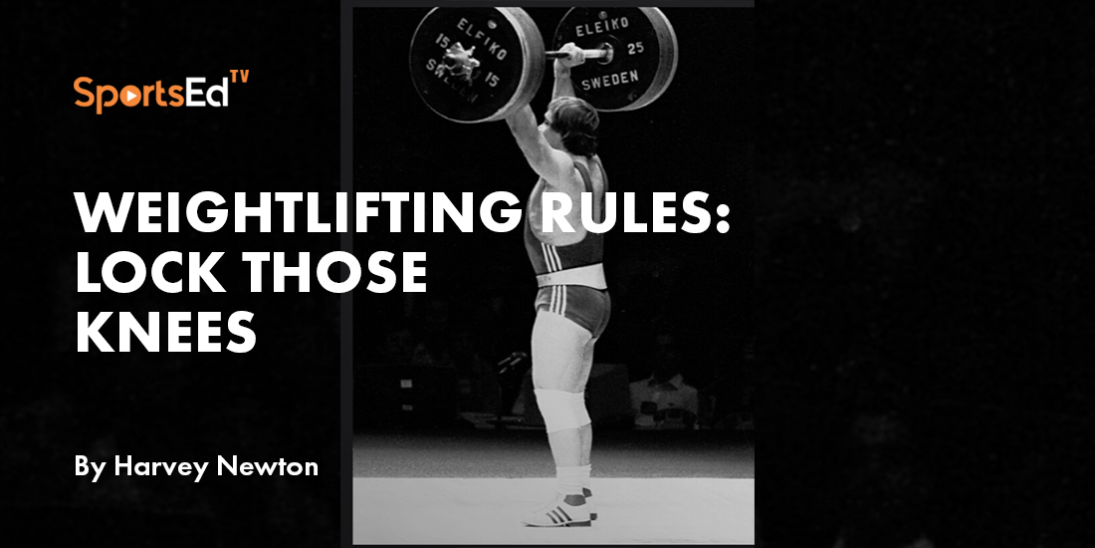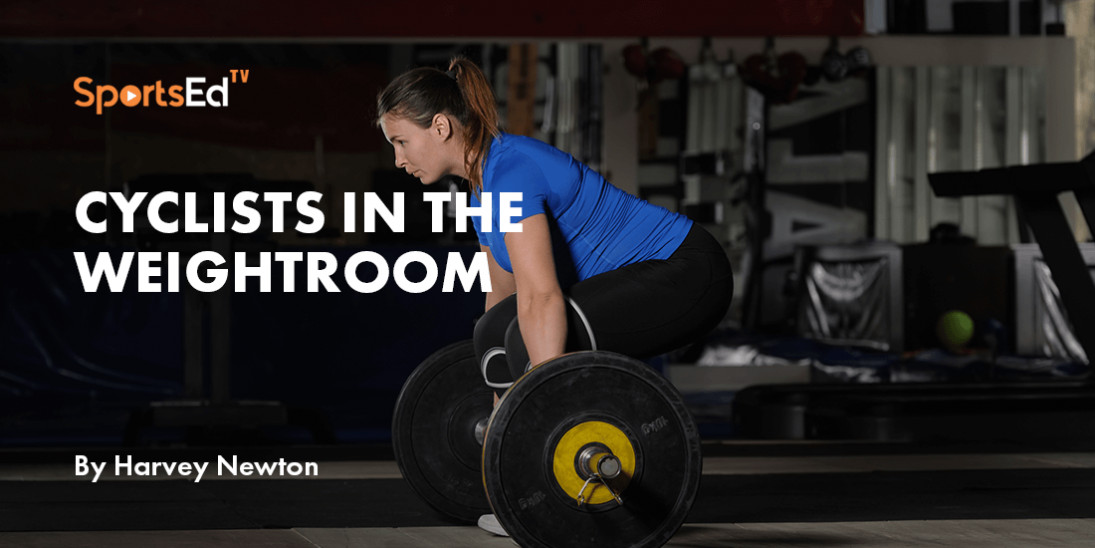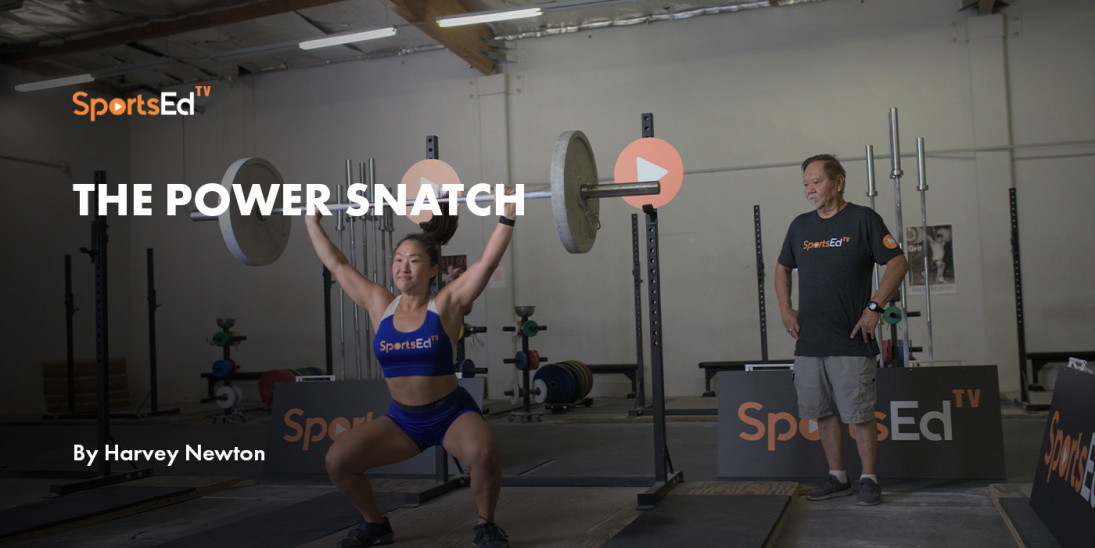Weightlifting
Welcome and thanks for visiting...

Do You Know These Jerk Rules?

The Olympic sport of weightlifting has several technical rules in place that can cause confusion for uninformed athletes when properly enforced by the officials. This blog takes a look at several small details related to proper performance of the jerk lift.
1. Parallel Feet = Down Signal
In a recent SportsEdTV blog I mentioned witnessing at least one Tokyo lifter get the down signal (and three white lights) for a jerk in which her feet were not nearly parallel to each other. This requirement has been a long-standing technical rule in the sport of weightlifting.
That lift reminded me of a world record attempt by Yanko Rusev (75kg, BUL) at the 1981 World Championships in Lille, France where I served as the assistant coach for Team USA. I easily located in Bruce Klemens Flicker collection the photographic evidence needed for this blog. Any written confirmation of this event evaded me. Fortunately, Bruce maintains excellent files of all his journal write-ups and was able to provide the following details from both Iron Man and Strength & Health, (January 1982).
Keep in mind that the technical rules 40 years ago differed from today’s. Fourth attempts for records, ties in case of lighter bodyweight, and 2.5kg incremental multiples between standard attempts reflect rules no longer in effect.
In the 75kg category, Rusev had out-snatched Pervy (URS) by 2.5kg to lead going into the C&J. Pervy jerked a 190kg opener. Rusev started with 197.5kg. Pervy, who was heavier, needed, and was successful with, 202.5kg, moving himself into first place. Rusev regained first place with a success at the same weight. In order to win, Pervy had to take a world record of 207.5kg. He cleaned it but failed to hold the jerk. Rusev opted for this same weight, getting it overhead, but then, as Bruce reported, “… a strange thing happened…Rusev never brought his rear leg into line. He just stood there with one foot ahead of the other until he finally dropped the bar from arms’ length.”
The final medals determined, both men took fourth attempts at 206kg to break the existing world record. Bruce continues, “The Russian could only deadlift it, but Rusev made a picture-perfect clean and this time, after some staggering, got his feet into line for three whites. Later, a Bulgarian official was quoted as saying that Rusev had missed the 207.5 intentionally. Since he gets paid under the table for each World record, ‘…he only wishes to break the record by a little’.”
.png)
Rusev fails to return his feet online with 207.5kg
Bruce Klemens Photography
.png)
Minutes later Rusev breaks the world record with 206kg
Bruce Klemens Photography
2. Extend the Legs = Straighten the Knees
For most of weightlifting’s history, the technical rules have required that a lifter fully extend (“lock”) the knees 1) after the clean, 2) before the jerk, and 3) while awaiting the down signal with the barbell overhead. This full extension requirement has also always been present for the snatch.
This does not mean that every referee knows, or can see, a violation of this requirement. Generally, the center referee only sees the lifter with a head-on perspective, so viewing extended knees is a challenge. But that’s why we have three referees.
This rule is found in two locations in the 2020 edition of the International Weightlifting Federation’s Technical and Competition Rules and Regulations. Article 2 is entitled The Two Lifts. Both 2.2.1(snatch) and 2.3.1 (clean), and 2.3.2 (jerk) spell out that the legs/knees must be fully extended at the completion of the lift.
But additional IWF emphasis (their bolding, below) on this requirement has recently been made. One may wonder why?
TCRR MODIFICATIONS AS OF 01 NOVEMBER 2018 AND
01 JANUARY 2019
2.3.2
“The athlete must become motionless with the knees fully extended before starting the Jerk. The athlete bends and dynamically extends the legs and arms simultaneously to move the barbell upward in one motion to the full extent of the arms, while either splitting or bending the legs. The athlete returns his / her feet to the same line parallel to the plane of the trunk and the barbell with his / her arms and legs fully extended (emphasis added). The athlete waits for the Referees’ signal to replace the barbell on the competition platform.”
One does not really want to stand at “attention” with a large weight on the shoulders, ready to jerk. Some coaches advise maintaining slightly unlocked knee joints prior to jerking. Get carried away by standing with more than very slightly bent knees and this relatively obscure rule may be invoked.
Flexed knees with the weights overhead is a separate issue. In violation of 2.3.2, the lifter may not get a down signal from the referees, as they are waiting for the lifter to assume the final position that includes straight knees. This varies considerably based on the officials and the system in place for judging.
Absent the new judging light system, like at most local meets, the center referee is responsible for providing the down signal that informs a lifter to return the barbell to the platform. Again, the center referee is usually not in a good position to judge the extent of a lifter’s knees, so an otherwise good lift that receives a down signal may draw red lights from the two side referees (who have no control over the down signal) since they generally have a better view of the lifter’s position. Had the center referee known the situation and withheld the visual and verbal down signal, perhaps the lifter would have straightened the lower body.
With the more modern electronic light system, in place at many high-level meets, each of the three referees contribute to the down signal. Two similar (white or red) calls, and the down signal is automatically activated.
This may be more than the average lifter wants to know about the referees and how or why they contribute to the judging of the lift, but a well-informed lifter stands a better chance of success.
Has this failure to straighten the knees ever cost an athlete a lift? The first time I witnessed this situation was, again, at the 1981 World Championships. Here is what team manager Dick “Smitty” Smith wrote in his after-action report published in USWF Notice #81-9 (October 28, 1981):
“Lady luck was not with Kevin Winter either. While he failed to total, Kevin did have 10th place “in his pocket” with his 180 (kg) clean and jerk, which he had overhead for at least eight seconds. Unfortunately, his knees were bent and hence, did not receive the down signal and lost the lift.”
A few years ago, Jason Brown, a lifter I had originally coached, finished second in the 2007 USAW National Junior Championships. He was turned down for holding his second attempt snatch of 122kg with slightly flexed knees. Immediately, Corrine Grotenhuis, serving as either a session official or a jury member, approached me to tell me the reason the lift was declined. Knowing the issue, I simply nodded in agreement.
Jason, who had only recently started using knee sleeves, discarded them after the meet; I never saw him use them again. The appearance of slightly flexed knees, particularly when covered by knee sleeves, provides a pretty obvious view to the officials. This can be seen in Jason’s final C&J with 155kg that was approved by the officials.
.png)
Jason Brown awaits the down signal with what might be judged as knees not fully extended
Bruce Klemens Photography
Barbell Oscillation: How Much is a “Deliberate” Effort?
We’ve seen several efforts to “energize” the jerk portion of the C&J. It was noted some years back that lifters from certain countries began the jerk with their feet slightly staggered, with obviously the foot to move forward in the split being placed slightly ahead of the other foot that moves rearward.
In theory, this practice should reduce the time it takes to split. But the rules have always clearly stated that a lifter’s feet must “… return to the same line…” after the clean, prior to the jerk. At a local meet, with officials likely to be seated at platform level, this would be obvious and should draw red lights.
But at big international meets the referees are seated lower than the platform, so as to provide the audience a clear view of the lifter. From this low position, it is nearly impossible to see a lifter’s feet and how they are or are not aligned. Fortunately for the referees, the Jury is also likely to be located fairly low, but farther back.
An obvious way to increase jerk performance (assuming enough weight is on the bar) is to create a well-timed oscillation of the apparatus. This is normally initiated by raising the barbell off the shoulders a couple of inches at the top of the clean recovery, then flexing the knees slightly to absorb the weight when the bar returns to the shoulders. This is followed by standing still, knees extended, ready to jerk. A well-timed slight oscillation of the barbell can add to the drive portion of the jerk.
However, deliberate oscillation of the barbell (a rather subjective call by the officials) prior to the dip and drive portion of the jerk is another violation of the rules, but what if a lifter can make this look other than deliberate?
Many of today’s lifters create some oscillation of the bar prior to dipping for the jerk. The latest trick is to inhale rather obviously, thus raising the chest and bar slightly. This appears to lock in the breath, after which the lifters dips and drive the barbell. With enough weight and/or a flexible bar, some oscillation is created. Will this result in red lights? That may depend on the officials and their experience in judging.
Conclusion
These are all simple rules, sometimes easily ignored by athletes or officials. As competitions progress from club or local meets to national or international championships, it is a good idea to be sure all lifters abide by these, and other, technical rules.





